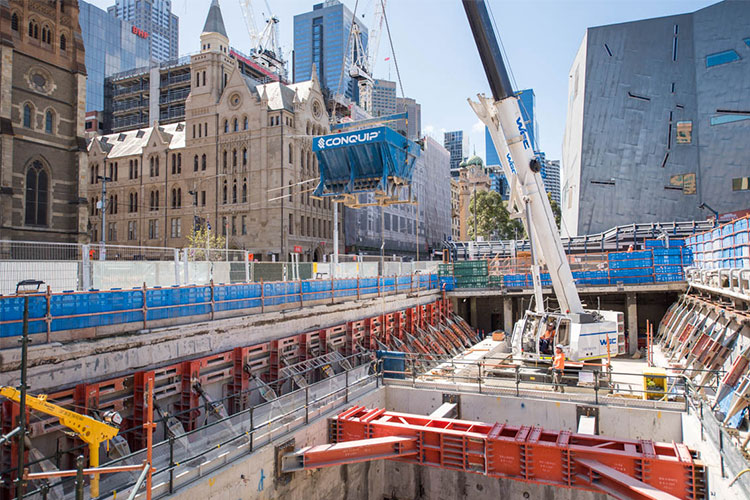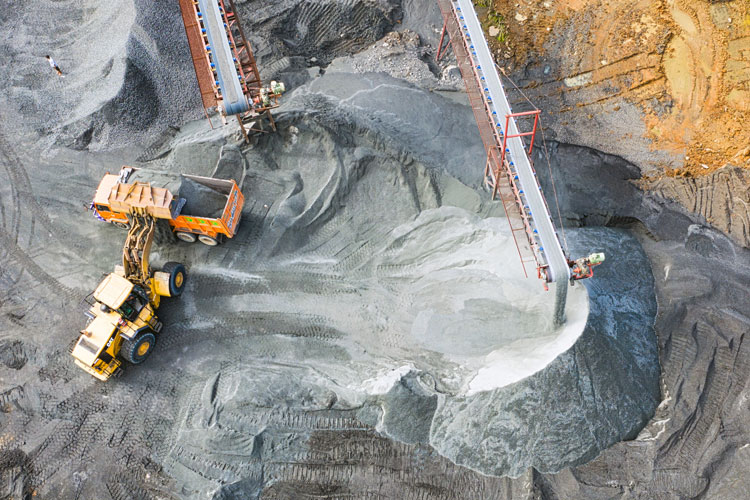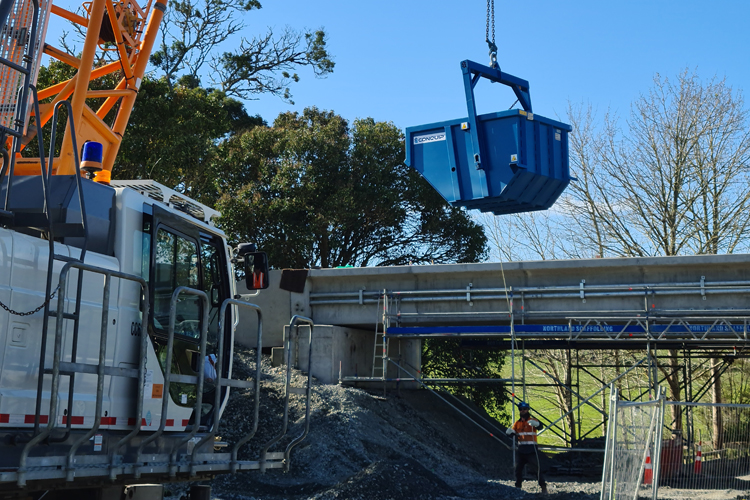Call us arrogant, but we know that you will want BulkX in your life, if you’re about to embark on a big dig. Because, quite simply, it’s the best method for bulk excavation.
Wherever there is construction, more than often there is a requirement to excavate spoil. While there are many traditional muck away methods, we’re confident that BulkX will win hands down!
BulkX is an innovative system primarily created for bulk excavation and shaft sinking projects and over the years it has been widely used across many different applications, from waste management and cofferdam excavation, to demolition and tunnelling.

BulkX VS Traditional Methods of Spoil Removal
While traditional excavation methods like muck bins, conveyors, long reach excavators and ‘haymaking’ may all get the job done, BulkX will add value to any project by reducing dig programmes and project costs.
But how? Let’s find out…
Conveyors
Conveyors are more commonly seen on large-scale sites where space is unrestricted and large spoil stockpiles can be created. While conveyors may be a safer method to muck bins and excavate the spoil faster, they can be extremely costly. This becomes increasingly apparent on bigger projects as troughs will either need to be specifically manufactured, or greater quantities will need to be hired or purchased, to meet site requirements.
One of the other disadvantages of conveyors is they create large stockpiles of spoil presenting the issue of double handling, a major time constraint on dig programmes. Plus, what happens when a large piece of rock or aggregate causes technical failure? This can cause long delays awaiting engineer fixes or replacement parts, especially on remote sites.
Solution: Pit Lane Gantry BulkX
On the Bow Street project in London, access to the site was limited to just a single option, through a small archway in the façade. A conveyor seemed to be the only solution and an extremely costly one due to the amount of troughs required to navigate from the excavation location to the discharge location…step forward BulkX!
The innovative Pit Lane Gantry System provided the ideal solution for spoil removal and kept traffic disruption to a minimum with only a single lane road closure required.
BulkX made spoil removal safer and more efficient than using a conveyor but it also limited noise and dust pollution by reducing the number of wehicles required on site.
So, what makes BulkX a better method that conveyors?
- No chance of downtime from technical breakdowns.
- Faster, with no double-handling of spoil.
- Less space required – ideal for any size of site.

Long Reach Excavators
One of the biggest challenges facing construction is the impact on the local environment and surrounding areas. Long reach excavators are loud machines that generate excessive noise…not ideal for excavation projects in built-up, urban environments.
Furthermore, muck away trucks are generally required on-site for fill. During winter months, site conditions deteriorate, becoming wet and muddy and the constant flow of trucks entering and exiting a site for refill, causes water and muck run-off on surrounding local roads.
Long reach excavators or telescopic clamshell excavators are expensive to hire, let alone purchase and it is because of this that most contractors generally opt for hire. Although these machines can support bulk spoil removal, when it comes to completely excavating a basement or dig, BulkX is the most viable method.
BulkX vs Long reach excavators – who wins? BulkX.
- Eliminates expensive machinery hire rates or purchase costs.
- Faster cycle times and easier to predict scheduling of muck away wagons.
- Less noise and dust pollution, reducing impact on local community.

Muck Bins
Muck bins are a ‘go-to’ excavation method for many contractors as hiring or purchasing is fairly easy for contractors and relatively cheap. However, when moving a lot of material on a bulk excavation project, BulkX is a much safer and more efficient solution. Here are a few reasons why…
Firstly, operatives must stand in the ‘danger zone’ and physically guide the heavy-duty bin towards the discharge location. In some cases, they are required to manually discharge the spoil using a release mechanism.
Secondly, the spoil discharge is staggered as the bin cannot empty in one motion. The crane operator must manoeuvre the crane to release the waste, which can cause the muck bin to swing and endanger personnel in the discharge zone.
Lastly, spoil must be stockpiled before it is transported to muck away trucks. This hugely increases cycle times and spoil removal is less efficient and more costly due to labour time being doubled.
5 seconds Discharge with 10,000 litres BulkX
On the Crossrail Stepney Green project, the Tunnel Boring Machines (TBMs) created large amounts of spoil that needed excavating from the shafts. The low capacity and safety hazards of the muck bins prompted a change in approach.
A large capacity 10,000 litres BulkX bin with a discharge gantry above the stockpile location allowed 24/7 muck away. BulkX could discharge waste in just 5 seconds, 20X faster than the muck bins and with no personnel required in the discharge zone, safety was hugely improved. In total, BulkX cut 12 weeks of the dig programme, removing 135,000 tons of clay spoil.
So, who wins out of BulkX and Muck Bins? BulkX.
- More spoil moved in less time – less crane time.
- No stockpiling required.
- Safer as no personnel are in the discharge zone.

'Haymaking' with Excavators
‘Haymaking’ in construction terms refers to an excavation method where multiple excavators are incrementally, or sequentially, positioned in the cavity to excavate waste from the bottom, to the top. Although this method is still used in construction, it is becoming increasingly unpopular due to its negative environmental properties, time inefficiencies and large costs from equipment and operator hire.
Here's why BulkX triumphs every time over Haymaking:
- Far less machinery required, dramatically improving environmental impact.
- Cost-effective as less machinery and operator hire required.
- Efficient - no double-handling of spoil.

Considering Specifying BulkX on Your Next Bulk Excavation Project?
Wise choice! View the diverse BulkX system options available here, bespoke solutions can be manufactured to suit any specific site layout.






